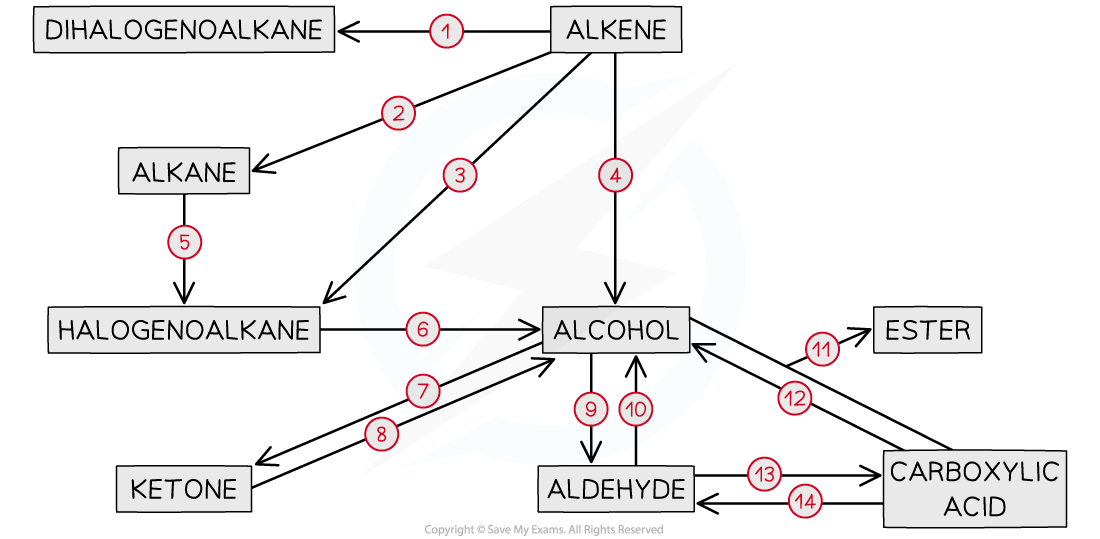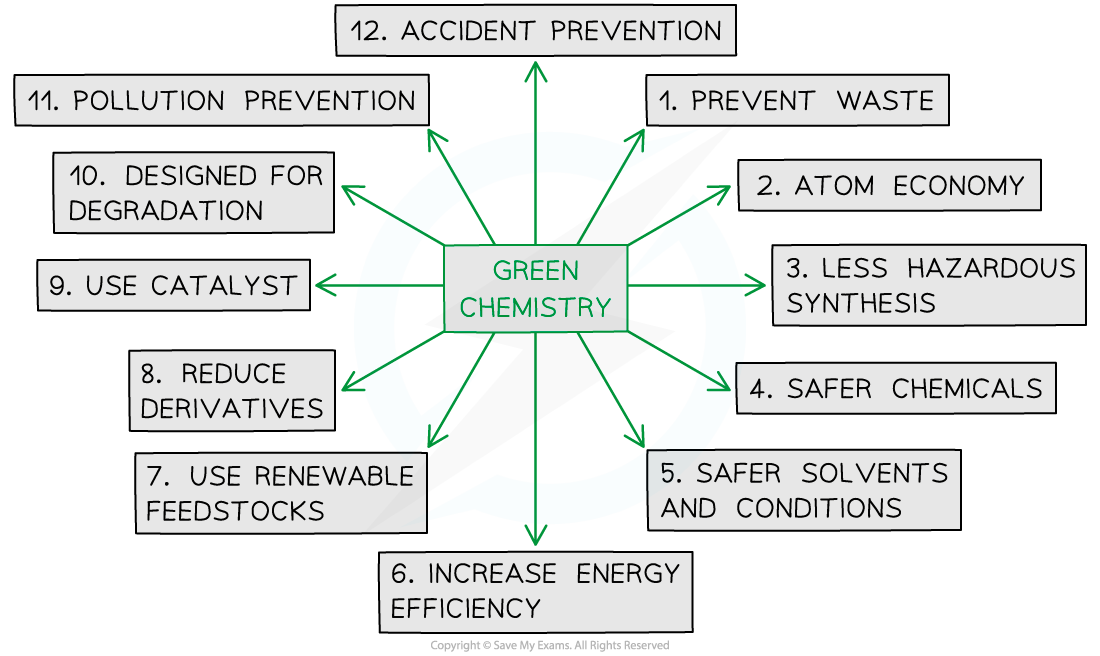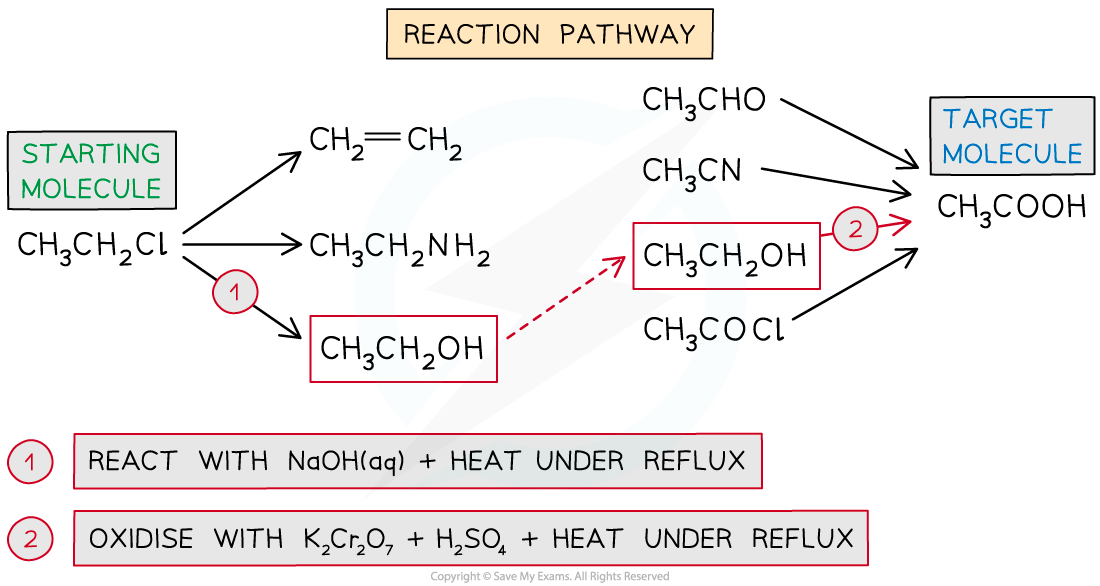Organic Synthesis
- It is possible to make a large number of organic products from a few starting compounds and the necessary reagents and conditions
- Knowing how organic functional groups are related to each other is key to the synthesis of a given molecule
- The main functional groups you need to know are
- Alkanes
- Alkenes
- Halogenoalkanes
- Alcohols
- Carbonyls (aldehydes & ketones)
- Carboxylic acids and derivatives
- Arenes
Aliphatic Reaction Pathways
- The key functional groups and their interconversions are summarised here:

The main reaction pathways in aliphatic chemistry
Aliphatic Chemistry Reactions Table
Exam Tip
Remember, that due to the strength of the LiAlH4 as a reducing agent, it is unlikely that reaction 14 can be stopped at the aldehyde To form an aldehyde from a carboxylic acid, you reduce the carboxylic acid to a primary alcohol and then oxidise it to the aldehyde
Aromatic Reaction Pathways
- The key aromatic reaction for this course is:

The nitration and reduction reactions to form phenylamine from benzene
Aromatic Nitration and Reduction Reactions Table

Choosing A Reaction Pathway
- Chemists will often have several choices of reaching a target molecule and those choices need to take into the principles of green chemistry

The twelve principles of green chemistry
- By choosing a pathway that has fewer steps, you can prevent waste and reduce energy demands which is better for the environment
- This also reduces production costs
- By analysing the atom economy of each step, you can select reactions that give a higher atom economy
- Choosing alternative safer solvents also follows the principles of green chemistry
Designing a Reaction Pathway
- The given molecule is usually called the target molecule and chemists try to design a synthesis as efficiently as possible
- Designing a reaction pathway starts by drawing the structures of the target molecule and the starting molecule
- Work out all the compounds that can be made from the starting molecule and all the molecules that can be made into the target molecule
- Match the groups they have in common and work out the reagents and conditions needed
Worked Example
Suggest how the synthesis of ethanoic acid from chloroethane could be carried out
Answer

Exam Tip
You could be required to design a synthesis with up to four steps.
